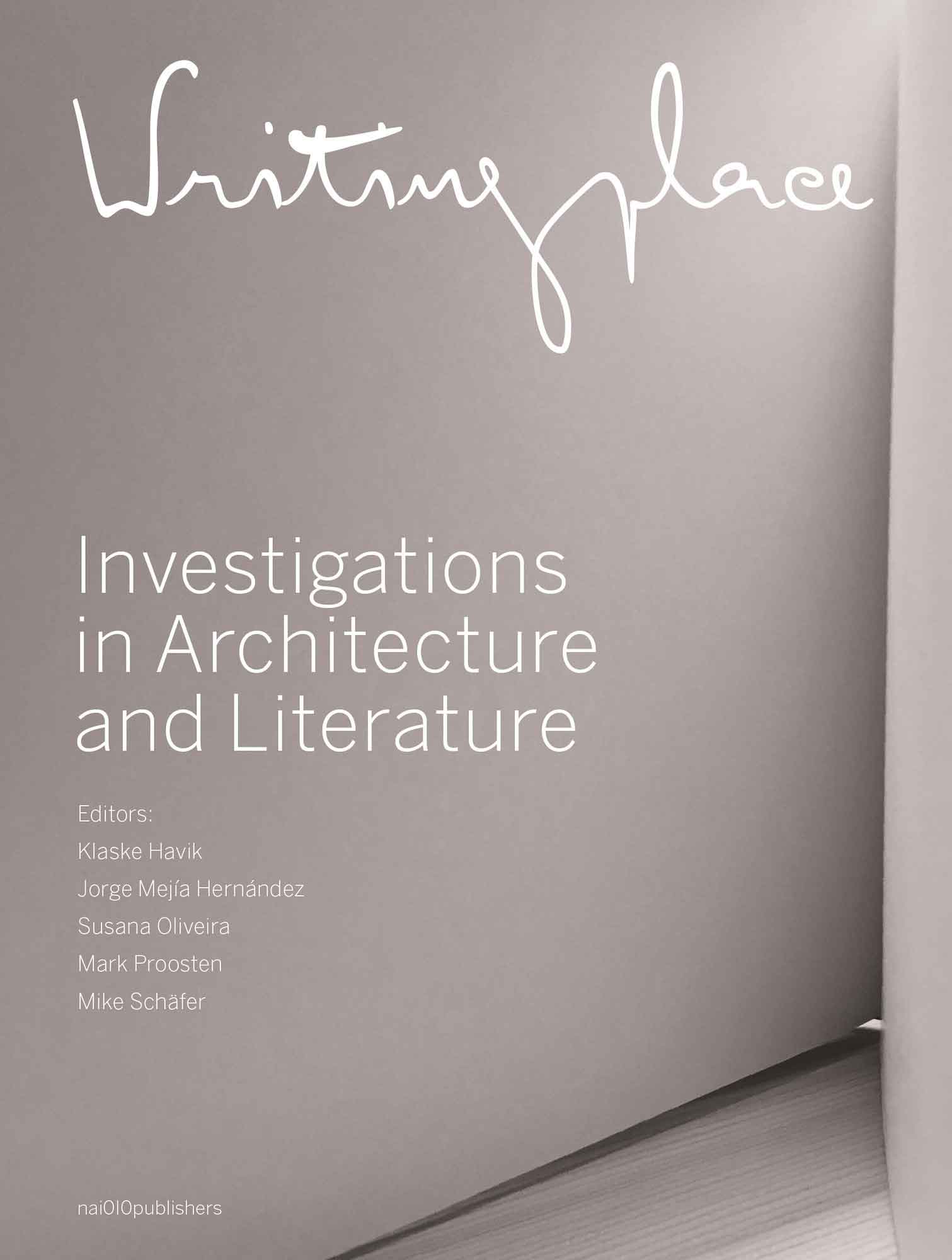


between land and water
between dancing and falling
between dream and thought
between now and later and then
on ever these same edges
we build and write
because the lines
inescapably
own us as we own them
Literary Writing as a Mode of Architectural Investigation
In my work, I aim to address crucial architectural themes related to the experience, use and imagination of places. To find appropriate methods to address these issues, I turned to literature. In Urban Literacy: Reading and Writing Architecture (2014), I proposed a literary approach to architectural and urban questions.
The traditional tools of architects, often foregrounding rational and formal modes of thinking, fail to address the fundamental ambiguities of architecture, such as the seemingly opposite notions as subject-object, author-reader and reality-imagination; fields of tension which relate to the question how architecture is experienced, used and imagined. By developing a literary way of writing as a mode of architectural investigation, such ambiguities can be addressed. Literary writing deals almost by definition with subjective experience and may give objects identity; it experiments with the interactivity between the writer who initiates a story and the reader who co-produces it; it balances between a given reality and the imagination of other possible situations.
For this website I present three examples of how I have used my own literary writing for architectural investigations. The three modes of writing are closely related to the three ‘scriptive’ approaches to architecture I developed in Urban Literacy: Description, Transcription and Prescription.
Klaske Havik holds the chair of Methods & Analysis at Delft University of Technology. She has developed a distinct research approach relating the experience and use of architecture and urban space to literary language. Her book Urban Literacy. Reading and Writing Architecture (Rotterdam, nai010 2014), based upon her PhD, developed a literary approach to architecture and urban space.
Klaske initiated the platfom Writingplace and organised the 2nd conference on architecture and fiction: Writingplace. Literary Methods in Architectural Research and Design (2013), which resulted in the book Writingplace. Investigations in Architecture and Literature (Rotterdam, nai010 2016). The Writingplace journal for Architecture & Literature was launched recently.
As editor of the Dutch-Belgian peer reviewed architecture journal OASE, she edited, among other issues, OASE#91 Building Atmosphere (2013), OASE#85, Productive Uncertainty, (2011) and OASE 70 Architecture and Literature.
Havik’s literary work has appeared in Dutch poetry collections and literary magazines.
Other publications include Architectural Positions: Architecture, Modernity and the Public Sphere (with Tom Avermaete and Hans Teerds, SUN 2009), ‘How Places Speak’, in Sioli and Yoonchun (ed), Reading Architecture, Literary Imagination and Architectural Experience, (London: Routledge, 2018) and ‘Writing Atmospheres’ in Charley (ed) Research Companion to Architecture, Literature and the City (London: Routledge, 2018).
For her contribution to the architectural debate, she received the Dutch Architect of the Year Award in 2014. Currently, Havik is Research Leader of the Department of Architecture at TU Delft and Action Chair of the Eu Cost network “Writing Urban Places”.
links:
Writingplace Journal for Architecture&Literature
COST Action Writing Urban Places
TU Delft Methods&Analysis website
OASE Journal for Architecture
In Urban Literacy. Reading and Writing Architecture (2014), I developed three ‘scriptive’ approaches to architecture – Description, Transcription and Prescription.
‘Description’ refers to the capacity of the literary writer to evocatively describe. Poetic writing is the tool I use to reveal the site-specific atmosphere and sensory perception of places.
‘Transcription’ focuses on the investigation of the interactive relationship between author and reader, and consequently, between architect and user. As a mode of writing, scenes of daily narratives highlight the connection between architectural spaces and the spatial practices of their use.
‘Prescription’ deals with the field of tension between reality and imagination, as indeed architects and planners are involved with the making of a not yet existing situation. Especially surrealist and magic realistic literary modes of writing come to the fore as approaches merging reality and imagination.
Alvar Aalto / Finnish architecture and design
The work of Finnish architect Alvar Aalto, for its combination of international modern architecture and local sensitivity. Also less known Finnish architects are of interest, such as Pietelä (expressive, unconventional public buildings) and Juha Leiviskä (strong rhythmic quality and play of light, see also my description in OASE#91). Finnish architect and theorist Juhani Pallasmaa has been a mentor of my work, he was one of the supervisors of my PhD, and we worked together on several occasions. I studied in Finland in 1998 and since remained a frequent visitor. In 2015-17, I was visiting professor of architectural design at the University of Tampere.
Literature: magic realism
I find great inspiration in literary descriptions of places, especially in magic realistic literature in which facts and fiction merge. For instance, the work of Gabriel Garçía Márquez depicting life in cities and villages in Colombia, Hubert Lampo’s descriptions of Belgian urban areas, or the recent novel Malva by Dutch writer Hagar Peeters about the physically and mentally impaired, disowned daughter of Chilean poet Pablo Neruda.
Poetic landscapes.
Poetic impressions of landscapes in poetry and painting. For instance the thin Dutch horizons in the work of painter Jan Mankes; the South American, Spanish and Dutch landscapes in the poems of Fleur Bourgonje; the meadows of Groningen in the work of poet Rutger Kopland.
Plecnik’s Story, describing Ljubljana through the eyes of Plecnik (2014, epilogue of Urban Literacy) is a text includes all three ‘scriptive’ approaches – Description, Transcription and Prescription.
My literary analysis of some works of Aalto and Salmona:
http://mar.mcgill.ca/article/view/31
Some poetic sitewritings, which relate to Description, are posted on Writingplace
http://writingplace.org/?p=6610
A series of poems on the Ciudad Abierta terrein of the School of Architecture in Valparaiso, Chile
http://writingplace.org/?p=6356
http://writingplace.org/?p=6392
Site-poem – Amsterdam harbor
http://writingplace.org/?p=6223
A series of poems and photographs on Scotland related to the works of sculptor Andy Scott.
http://writingplace.org/?p=457
(Book covers: Urban Literacy, Writingplace, OASE #70 Architecture& Literature)






































































